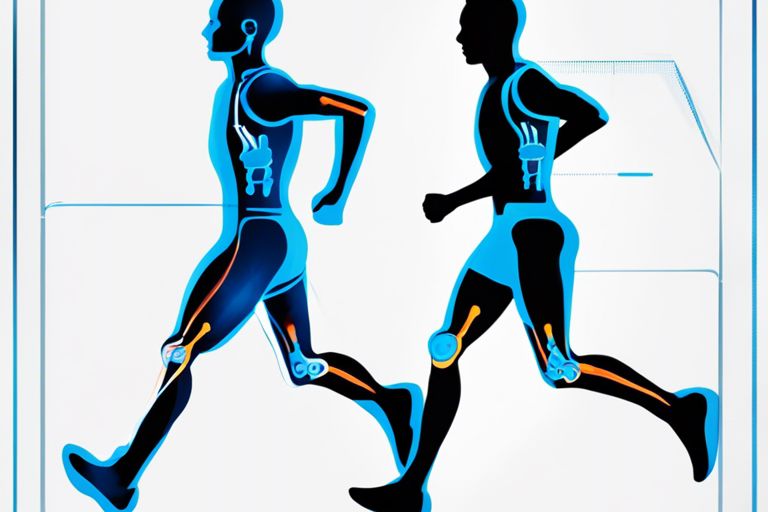You may not realize it, but the impact of running on bone density can be significant. Running is a high-impact activity that can put stress on your bones, which can lead to increased bone density. However, it’s important to be aware that this increased bone density is not always a positive thing, as it can also lead to an increased risk of stress fractures and other injuries. It’s crucial to understand the balance between the benefits and potential risks of running on your bone density.
The Biological Basis of Bone Density and Running
For many years, researchers have known that weight-bearing exercise, such as running, can have a positive impact on bone density. But how exactly does this happen? In this chapter, we will explore the biological basis of bone density and its relationship to running. By understanding the mechanisms at play, you can better appreciate the benefits of running for your bone health.
Understanding Bone Remodeling
Bone remodeling is a continuous process that occurs in your body throughout your life. It involves the removal of old bone tissue by cells called osteoclasts, followed by the formation of new bone tissue by cells called osteoblasts. This process helps to repair damage, maintain bone strength, and regulate mineral content in the bones. When you engage in weight-bearing activities like running, it signals to your body that more bone density is needed to support the mechanical stress. As a result, bone remodeling is enhanced, leading to stronger, denser bones.
The Effect of Mechanical Stress on Bones
When you run, the impact of your feet hitting the ground sends a mechanical force through your bones. This force stimulates the osteoblasts to lay down new bone tissue, making the bones stronger and more resistant to fractures. In fact, studies have shown that the mechanical stress generated by running can significantly increase bone density in the lower body, particularly in the hips and legs. This is especially important as you age, as it can help prevent conditions like osteoporosis and reduce the risk of fractures.
Empirical Evidence on Running and Bone Density
Some researchers have conducted empirical studies to investigate the impact of running on bone density, aiming to provide evidence-based insights into the relationship between these variables. Understanding the empirical evidence is crucial in determining whether running can effectively contribute to bone health and density.
Cross-Sectional Studies on Runners and Non-Runners
Several cross-sectional studies have compared the bone density of runners and non-runners, revealing interesting findings. In these studies, researchers have observed that regular running is associated with higher bone density in various regions of the body, such as the hip, spine, and legs. Notably, the differences in bone density between runners and non-runners are particularly significant among individuals who have been engaging in running activities for an extended period. This suggests that consistent running over time can have a positive impact on bone density, ultimately reducing the risk of osteoporosis and fractures.
Longitudinal Studies and Controlled Trials
In addition to cross-sectional comparisons, longitudinal studies and controlled trials have been instrumental in examining the effects of running on bone density. These studies have demonstrated that long-term participation in running leads to increased bone mineral density and improved skeletal health. Furthermore, controlled trials involving individuals who commenced running activities as part of an intervention have shown significant improvements in bone density over the course of the study. This indicates that even if you are new to running, initiating this form of exercise can yield positive outcomes for your bone health in the long run.
Factors Influencing Running’s Impact on Bone Density
However, it’s important to consider that the impact of running on bone density can be influenced by several factors. These factors can include the frequency and duration of your running sessions, the intensity and surface on which you run, as well as your overall diet and nutrition.
- The relative intensity of your running sessions
- The duration of your running sessions
- The surface on which you run
- Your diet and nutrition
- Your age and gender
Any of these factors can play a crucial role in determining the impact of running on your bone density.
Frequency and Duration of Running Sessions
When it comes to bone density, the frequency and duration of your running sessions are key factors to consider. Research has shown that regular, moderate-intensity running can help improve bone density, while excessive running without adequate rest can lead to negative effects on bone health. It’s important to find the right balance and avoid overtraining, as this can have a detrimental impact on your bone density over time. Aim for 3-4 running sessions per week with a duration that allows you to gradually increase your mileage without overexerting your bones.
Running Intensity and Surface
The intensity and surface of your running can also significantly influence its impact on bone density. High-impact activities like running can be beneficial for bone health, but only when performed in moderation. Running on softer surfaces like grass or trails can help reduce the impact on your bones compared to running on hard surfaces like concrete. Additionally, mixing in low-impact activities such as swimming or cycling can provide your bones with the necessary rest and recovery, enhancing their overall density and strength.
Additional Considerations and Recommendations
Now that you understand the impact of running on bone density, it’s important to consider some additional factors and recommendations to help you maximize the benefits of your running routine. These considerations will help you make informed decisions about your exercise and lifestyle choices to support healthy bone density.
Age and Gender Differences in Bone Density Response
When it comes to bone density response to running, age and gender play significant roles. As you age, your bone density naturally decreases, making you more susceptible to fractures and osteoporosis. Women are also at a higher risk of bone density loss, especially after menopause due to hormonal changes. It’s important for you to be aware of these factors and adjust your running routine and lifestyle choices accordingly to support your bone health as you age.
Nutritional and Lifestyle Factors Affecting Bone Health
After exercise, it’s essential to ensure that you’re consuming a balanced diet to support your bone health. Your body needs adequate amounts of calcium, vitamin D, and protein to maintain and rebuild bone density. Additionally, avoiding smoking and excessive alcohol consumption can also help preserve bone density. Regularly incorporating weight-bearing exercises and resistance training into your fitness routine can also help to improve and maintain bone density.
The Impact of Running on Bone Density
The impact of running on bone density is significant. Your bones respond to the impact and stress of running by building more density, which can help prevent osteoporosis and fractures as you age. Regular running can also help maintain and even improve bone density, especially if it is combined with a healthy diet rich in calcium and vitamin D. So, if you want to keep your bones strong and healthy, lace up your running shoes and hit the pavement regularly.




